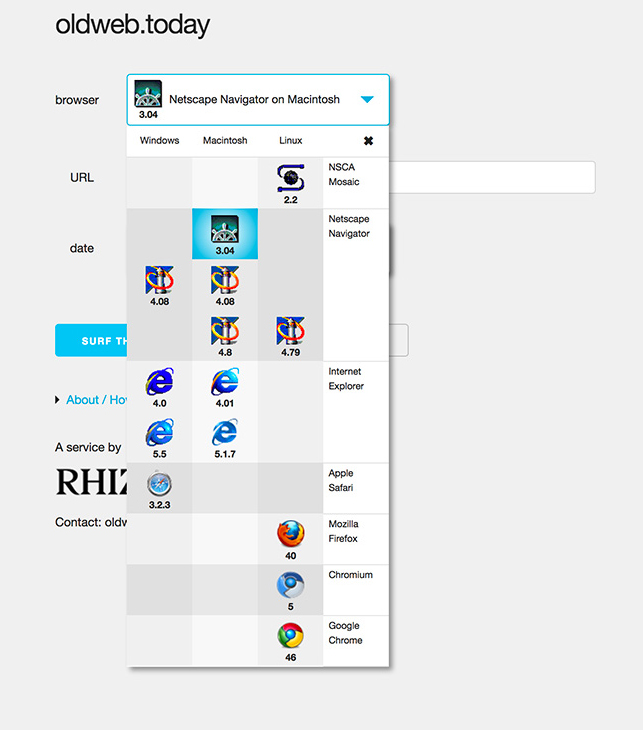 Oldweb.today interface, 2017
Oldweb.today interface, 2017
If the backend of the archive contains the expanded provenance information, then the frontend interface needs to facilitate presenting artworks in their historical context of creation. Another focus of Rhizome’s preservation programme has been the development of tools that can facilitate browser-based software emulation – both for legacy browsers (e.g. old versions of Microsoft’s Internet Explorer, or browsers from the ‘90s such as Netscape Navigator) or full system emulation (e.g. for the purpose of emulating applications running on Classic Mac OS or Windows 95 operating systems). Oldweb.today and Emulation-as-a-Service (developed with the University of Freiburg) are tools that facilitate such emulation. The legacy browsers served through the oldweb.today system, for example, allow the presentation of artworks in historically accurate environments and support obsolete plug-ins. Thereby historic artworks which otherwise no longer run in contemporary browsers, can be reperformed. This kind of software emulation, which is served within the user’s own browser, has been instrumental to successfully present numerous artworks as part of Rhizome’s ongoing online exhibition project – Net Art Anthology (2016–2018). What is more, presenting artworks in legacy environments or encapsulating them in a time-stamped archival copy via Webrecorder clearly places them within an archival framework. The constructed nature of this framework is made visible to the user in the frame of the emulated Netscape browser or Webrecorder’s navigation banner. This form of archival presentation does not claim “objectivity”, but rather introduces the user to one possible reperformance, among many, and invites interpretation.